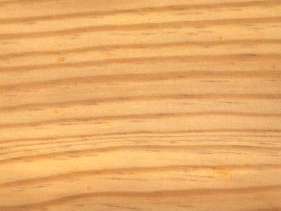
Pond Pine (Pinus serotina)
Family: Betulaceae
Common names: Marsh pine, Pine, Pocosin pine, Pond pine
Distributed in: United States (North America)
Distribution overview: Pond pine occurs in the Coastal Plains, with its range extending from south-eastern Virginia, south to central and south-eastern Alabama, and on Cape May, New Jersey. The tree prefers swamps, shallow bays and ponds, and is usually found in nearly pure stands from sea level to elevations of 200 feet (60 m) or less.
Common uses: Core Stock, Crossties, Decorative veneer, Fiberboard, Figured veneer, Hardboards, Mine timbers, Particleboard, Pile-driver cushions, Piling, Plain veneer, Plywood, Poles, Pulp/Paper products, Pulpwood, Railroad ties, Structural plywood, Utility crossarms, Utility plywood, Utility poles, Veneer
Environment profile: Widespread, abundant and globally secure
Tree size: Trunk diameter is 150-200 cm
Colors: the heart isWhite, Yellowand the sapwoodWhite, Yellow.The grain isGenerally straight, but may be somewhat uneven , the textureMediumand the lusterMedium
Natural durability: Susceptible to insect attack, Very durable
Odor: No specific taste
Kiln Drying Rate: Naturally dries slowly
Drying Defects: Internal Honeycombing Possible, Splitting
Ease of Drying: Variable
Comments: Abnormal wood tissue in the form of compression wood may be present
Blunting Effect: Moderate blunting effect on cutting edges
Boring: Fairly easy to very easy
Carving: Fairly Difficult to Very Difficult
Cutting Resistance: Resin exudation may gum up sawteeth
Gluing: Fairly Easy to Very Easy
Mortising: Fairly Easy to Very Easy
Moulding: Poor to Very Poor
Movement in Service: Poor to Very Poor
Nailing: Very Good to Excellent , Very good nail-holding properties
Planing: Poor to Very Poor
Resistance to Impregnation: Resistant sapwood
Response to hand tools: Responds well to hand tools
Routing recessing: Fairly Easy to Very Easy
Sanding: Good sanding properties
Veneering qualities: Veneers easily, Veneers moderately easy
Steam bending: Unsuitable for steam bending applications because of high resin content
Screwing: Pre-boring recommended, Very Good to Excellent Results; Turning: Yields clean surfaces
Painting: Very Good to Excellent; Polishing: Fairly satisfactory finishing treatments ; Staining: Responds fairly satisfactoril to most finishing treatments ; Varnishing: Very Good to Excellent;
- Numerical data Metric
- Numerical data English
- Strength properties
- References
 |
 |
 |
 |
| Item |
Green |
Dry |
Metric |
| Specific Gravity |
0,48 |
0,52 |
|
| Density |
|
|
kg/m3 |
| Bending Strength |
509 |
799 |
kg/cm2 |
| Crushing Strength |
30 |
62 |
kg/cm2 |
| Hardness |
|
|
kg |
| Impact Strength |
|
|
cm |
| Shearing Strength |
|
95 |
kg/cm2 |
| Stiffness |
88 |
120 |
1000 kg/cm2 |
| Tangential Shrinkage |
7 |
|
% |
| Radial Shrinkage |
5 |
|
% |
| Weight |
|
|
kg/m3 |
| Maximum Load |
0,56 |
0,63 |
cm-kg/cm3 |
| Toughness |
|
|
cm-kg |
| Static Bending |
|
|
kg/cm2 |
|
 |  |  |  | | Item | Green | Dry | English | | Bending Strength | 7252 | 11368 | psi | | Crushing Strength | 431 | 892 | psi | | Maximum Crushing Strength | 3587 | 7389 | psi | | Shearing Strength | | 1352 | psi | | Stiffness | 1254 | 1715 | 1000 psi | | Work to Maximum Load | 8 | 9 | inch-lbs/in3 | | Specific Gravity | 0.48 | 0.52 | | | Radial Shrinkage | 5 | | % | | Tangential Shrinkage | 7 | | % | | Volumetric Shrinkage | 11 | | % | |
Medium bending strength in the air-dry condition (about 12% moisture content)
Compression strength (parallel to grain) = medium
Boone, R.S., C.J. Kozlik, P.J. Bois and E.M. Wengert. 1988. Dry Kiln Schedules for Commercial Woods: Temperate and Tropical. United States Department of Agriculture, Forest Service, Forest Products Laboratory, General Technical Report FPL-GTR-57, Madison, Wisconsin.Little, E.L.1980.The Audubon Society Field Guide to North American Trees - Eastern Region.Published by Arthur A. Knopf, New York.Mirov, N.T. 1967. The Genus PINUS. The Ronald Press Company, New York. LCC Card No. 67-14783.Panshin, A.J. and C. deZeeuw. 1980. Textbook of Wood Technology, 4th Edition. McGraw-Hill Series in Forest Resources. McGraw-Hill Book Company, New York.USDA. 1987. Wood Handbook - Wood as an Engineering Material, Forest Service, Agriculture Handbook No. 72, Forest Products Laboratory, Madison, Wisconsin.USDA. 1988. Dry Kiln Operators Manual, Preliminary Copy. Forest Service, Forest Products Laboratory, Madison, Wisconsin.
|








